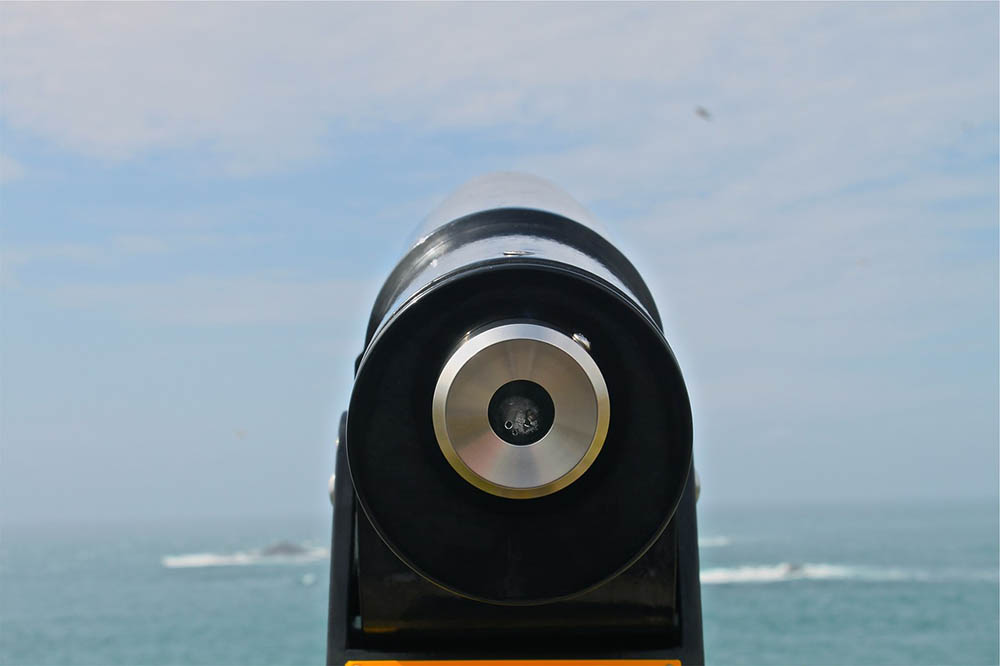What Is Monocular Vision? Everything You Need to Know!
Last Updated on

When you’re talking about monocular vision, context is important. You’ll get three different answers whether you’re talking about monocular vision in humans, animals, or optics.
We dove into all the possible definitions for you here, as well as background information on them all!

What Is Monocular Vision?
According to the U.K. National Healthcare Service, monocular vision refers to when someone can only use the sight of one of their eyes. While going blind in one eye is what most people think of with this condition, it could also be that someone has double vision when using both eyes, and they have to cover one eye with a patch to correct this.
While this is what monocular vision means to humans, another definition emerges when you broaden your horizons to the entire animal kingdom. Monocular vision occurs in animals when each eye works independently from the other. This typically happens when an animal has their eyes on the sides of their head, like with deer or rabbits. They process information from each eye separately, and this type of vision setup is known as monocular vision.

How Long Does It Take to Adjust to Monocular Vision?
If you’ve had normal, healthy vision throughout your entire life and you now have to adjust to having monocular vision, how long does it take for you to get used to things?
According to Diane Whitaker, chief of Duke Eye Center Rehabilitation, it typically takes 6 to 9 months to adjust to life with monocular vision. So, if you’re curious about what it’s like, you probably can’t just throw an eyepatch on for a few hours and figure it out!
What Kind of Animals Have Monocular Vision?
According to Utah Medical University, animals that are more frequently prey have monocular vision.
From an evolutionary standpoint, this makes perfect sense. Prey needs to see predators coming in order to run away and stay alive, and this is more important than the better visual acuity of both eyes facing the same direction.
Conversely, predators, like humans, lions, and hawks, are more likely to have binocular vision, or vision with both eyes facing the same direction and working together. Predators don’t need to see around them as much as they need to see the finer details to tell their prey apart from the rest of the environment.
Monoculars vs. Binoculars
While there are medical and scientific reasons for monocular vision, the world of optics has a different definition. Monoculars and binoculars have advantages and disadvantages, but why would you want to go with a monocular instead of binoculars?
The main advantage of a monocular over binoculars applies when you’re homed in on a specific object. This means you’re not trying to look at the surrounding area, and you already have the target in view.
A monocular gives you a “true” field of view, and this can make it easier to determine distances. Furthermore, since a monocular only has one lens, it’s typically lighter and more affordable than similarly priced binoculars.

Final Thoughts
Whether you’re dealing with monocular vision yourself, trying to hunt animals that have it, or simply need to decide between monoculars and binoculars, hopefully, this guide has helped clarify what you need to know!
Just remember that if you want to know what people are talking about when they mention monocular vision, context is key!
Featured Image Credit by: Black Salmon, Shutterstock
About the Author Robert Sparks
Robert’s obsession with all things optical started early in life, when his optician father would bring home prototypes for Robert to play with. Nowadays, Robert is dedicated to helping others find the right optics for their needs. His hobbies include astronomy, astrophysics, and model building. Originally from Newark, NJ, he resides in Santa Fe, New Mexico, where the nighttime skies are filled with glittering stars.
Related Articles:
What Is the Best Binocular Magnification for Hunting? Optical Features Explained
How to Clean a Refractor Telescope: Step-by-Step Guide
How to Clean a Telescope Eyepiece: Step-by-Step Guide
How to Clean a Rifle Scope: 8 Expert Tips
Monocular vs Telescope: Differences Explained (With Pictures)
What Is a Monocular Used For? 8 Common Functions
How to Clean a Telescope Mirror: 8 Expert Tips
Brightfield vs Phase Contrast Microscopy: The Differences Explained
